Op Session #14 was held Sunday afternoon, 20 November 2016. Since the holidays were upcoming, I tried to add a little seasonal “flavor” to mix things up a little for my regular crew. After 13 sessions, these guys were starting to more or les settle into a routine during the sessions and I don’t want the sessions to get stale.
To that end, the (model) S&NY scheduled a “Holiday Shoppers Special” to carry passengers from the rural areas served by the railroad to the “big city” of Williamsport.
Management posted a message notifying all employees of the special train:
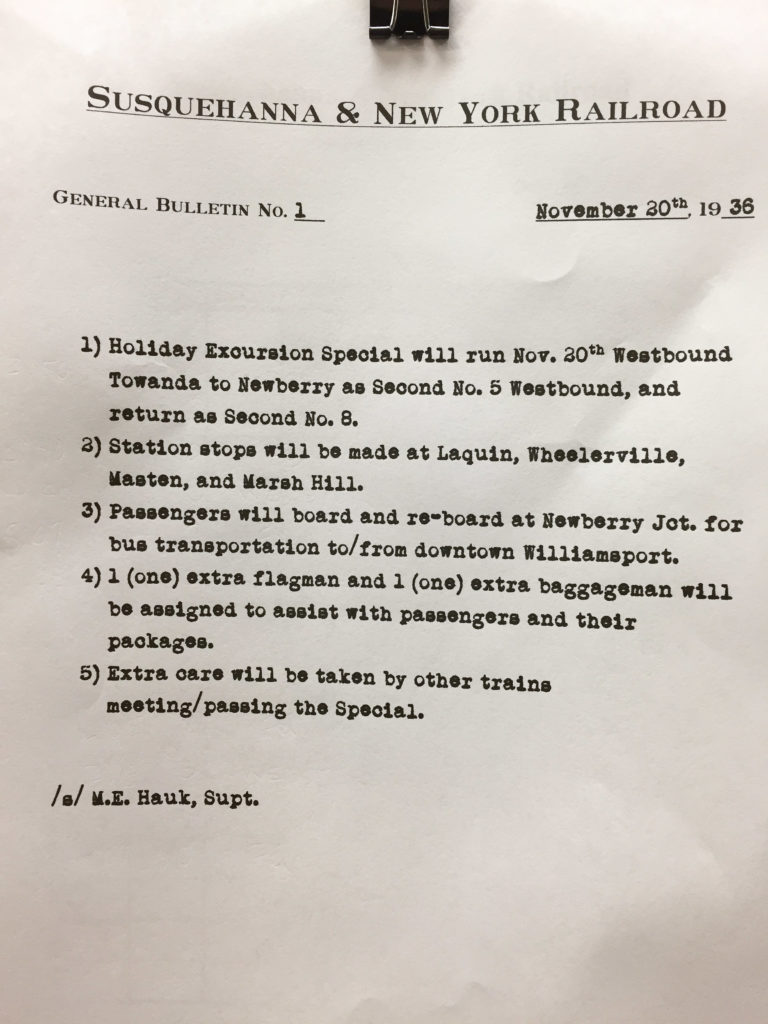
The special was run as a second section to through freight train No. 5 westbound and return as a second section to through freight No. 8. I thought this would be the best solution, since neither #5 nor #8 had any scheduled stops enroute, and are second class trains. If the special had run as an extra train, it would need multiple orders giving it priority over other trains in order to stay on time.
Also, I doubt many model railroads run trains as sections, so I thought this would be a good timetable and train order exercise for my crew guys.
The special still needed running orders, though:
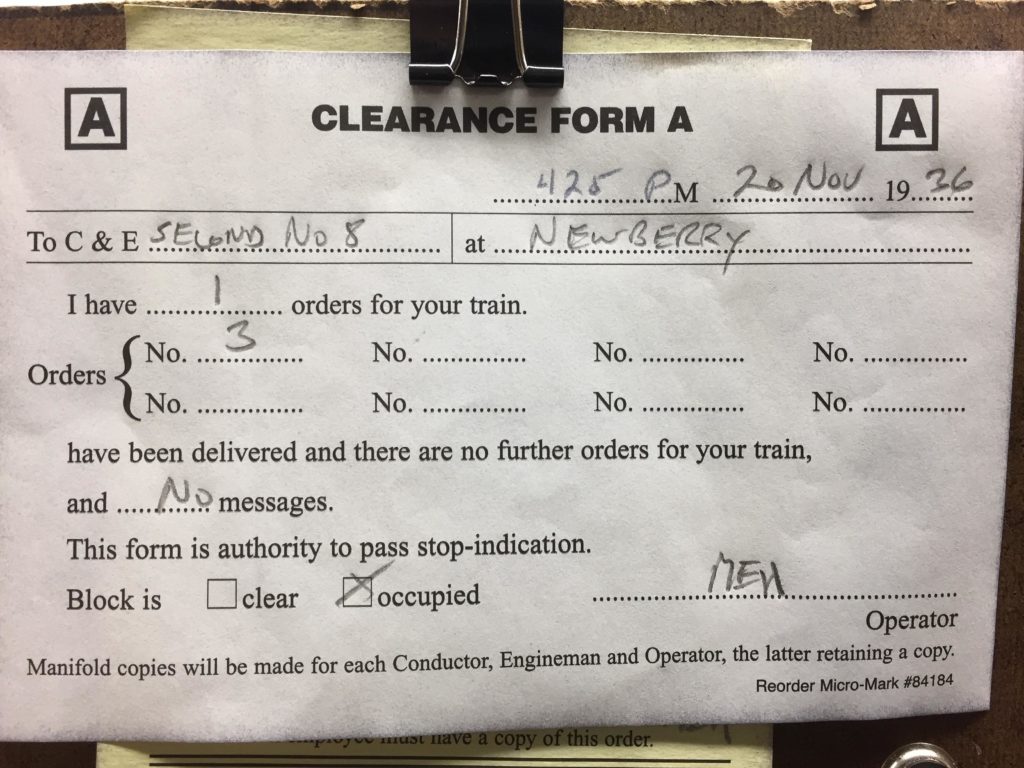
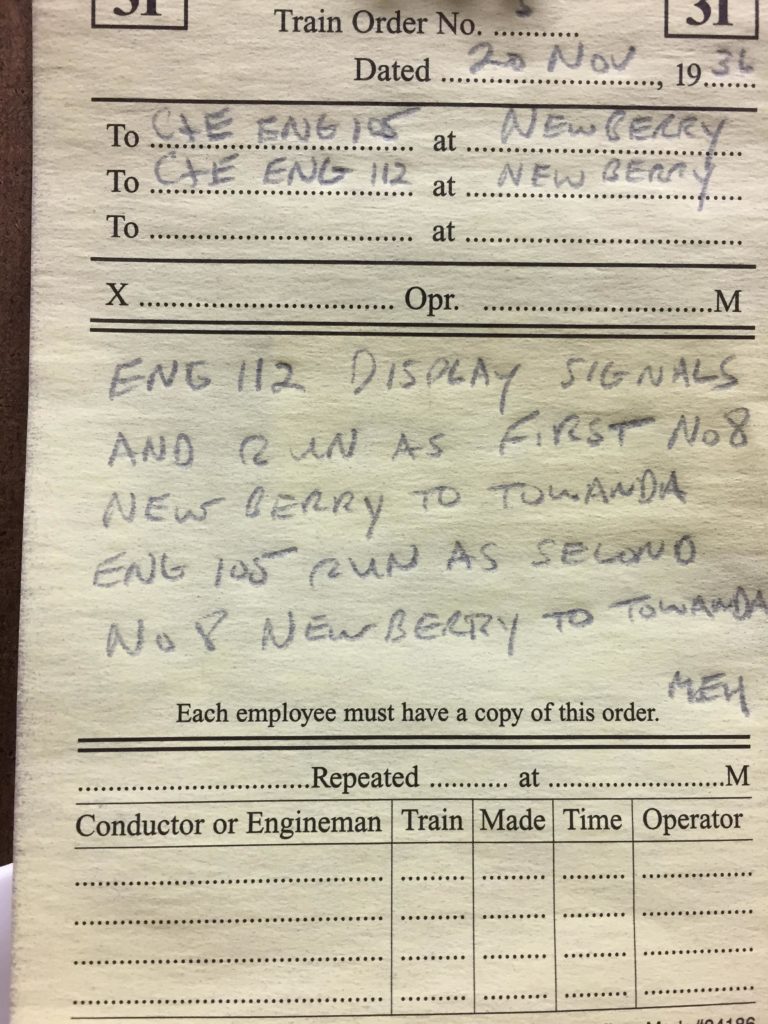
The signals engine #112 would display in real-life 80 years ago would be green flags by day and green marker lamps by night. The engineer of #112 leading train No.8 would call the attention of any trains he meets to these signals by blowing one long and two short blasts of the whistle. If no acknowledgement from the other train, No.8 would have to stop and determine why.
Since all my locomotives are sound-equipped, the crew running the special was able to comply with this requirement, and the other train could reply properly. I didn’t actually make any HO-scale green flags, so the engineer simply said “green flags” to the other engineer. All in good fun!
Here, #112 leading Train 22 meets the special at Wheelerville:
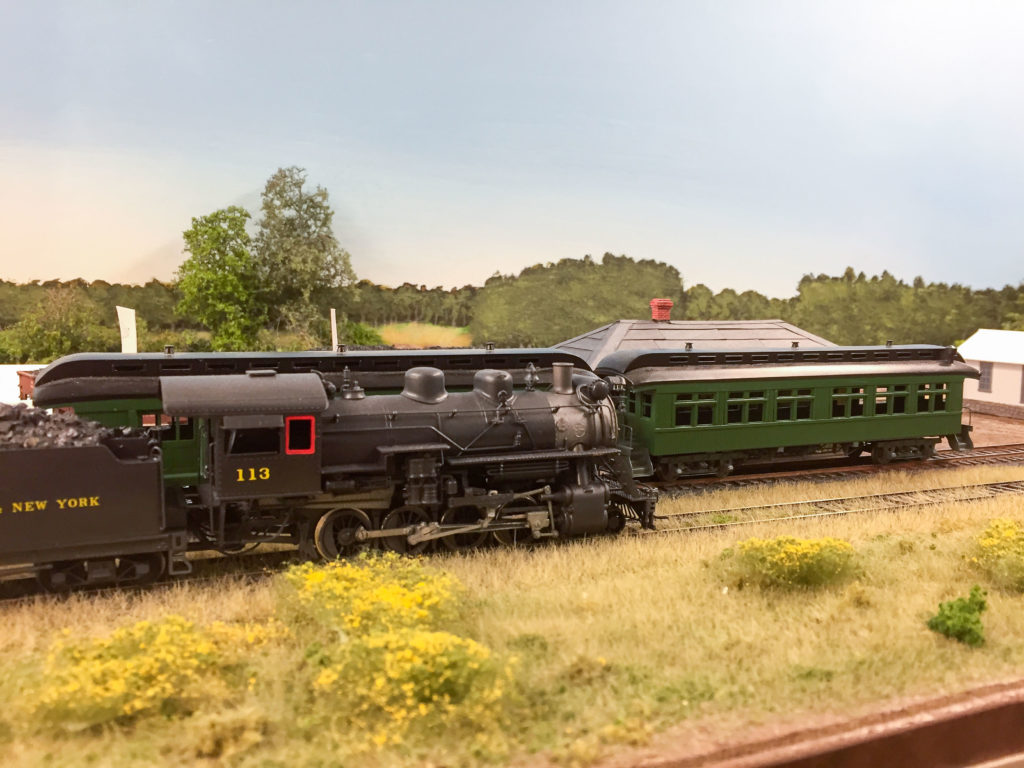
We were a little short of engineers for the session, so the coal extra had no helper crew. The extra engineer misread the timetable and thought he could safely double the hill from Marsh Hill to Wheelerville. Fortunately, he realized the error before any real harm was done, and was able to duck into the station track at Wheelerville to clear both No.5 and No.22, who were scheduled to meet each other at Wheelerville:
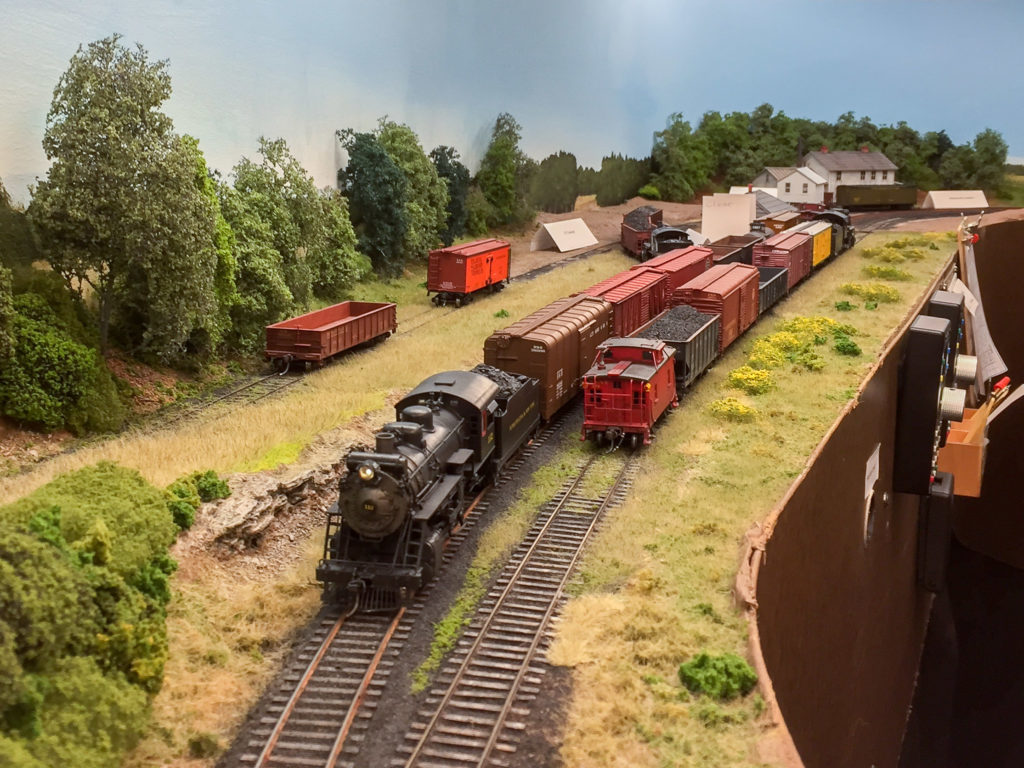 No major glitches during the session, other than occasional signal loss from one throttle at the far end of the layout at Towanda. Eventually a second receiver may have to be installed in that room if the problem recurs.
No major glitches during the session, other than occasional signal loss from one throttle at the far end of the layout at Towanda. Eventually a second receiver may have to be installed in that room if the problem recurs.
Session #15 was held on a very snowy evening on Saturday 10 December. I wanted to open this session to a few local operators, but the weather conspired against that, and only two could make it. The only change I made to this session was the motorcar normally used on Trains 2 and 3 was replaced by 4-4-0 #105 due to heavy holiday express traffic. I pulled a couple of express cars out of storage and added them to the railroad for No.2 to pick up. The motorcar lacks the guts to haul more than one milk car up the grade to Wheelerville, and the 105 barely made it with a consist of a brass combine, milk can car and two express boxcars.
The coal extras were annulled, and the through freights and local were the only trains run. Here, both work Newberry yard sorting out heavy interchange traffic off the NYC and RDG:
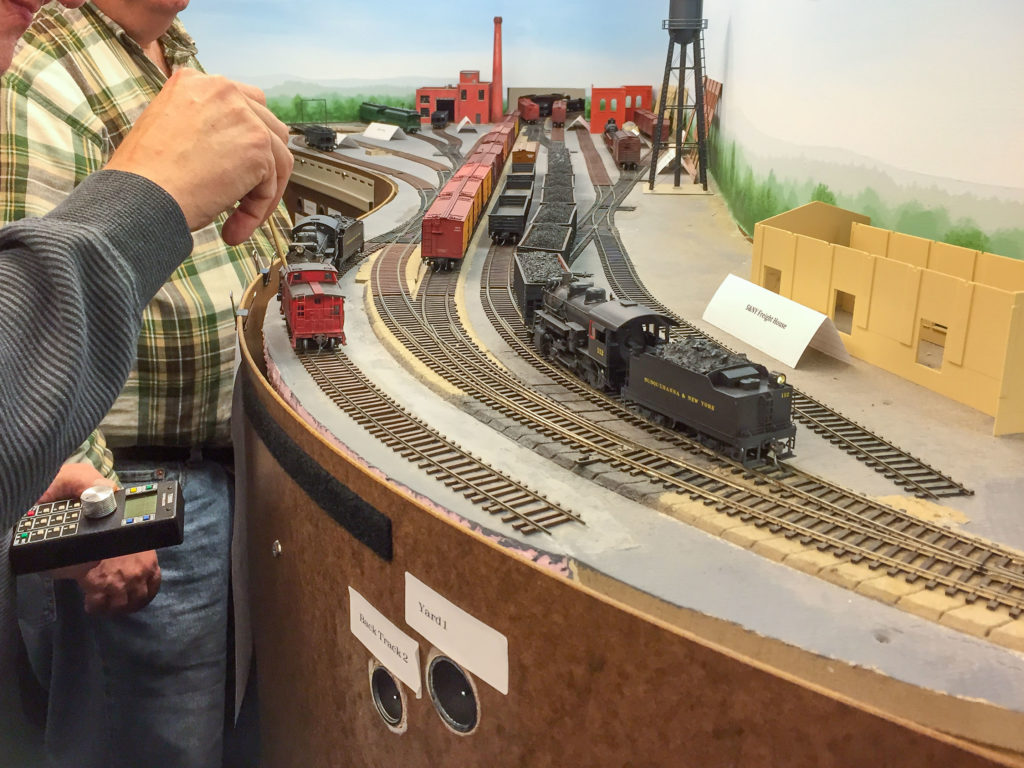
Cooperation pays off, and Newberry is empty a few minutes later as No.24 departs:
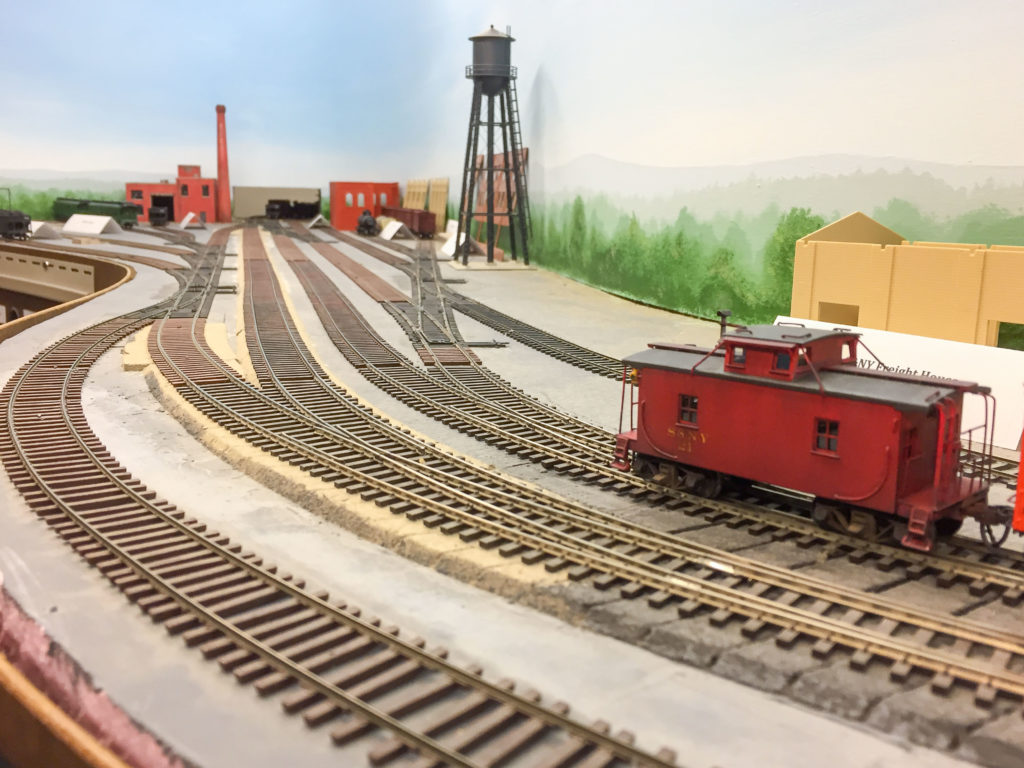
Short clip of the action at Newberry here.
Minor glitches included recurrent derailment of one truck on an older Stewart RDG hopper. The Stewart trucks are not the best, and I may try reaming out the journals before replacing the truck.
Otherwise, another rewarding session.
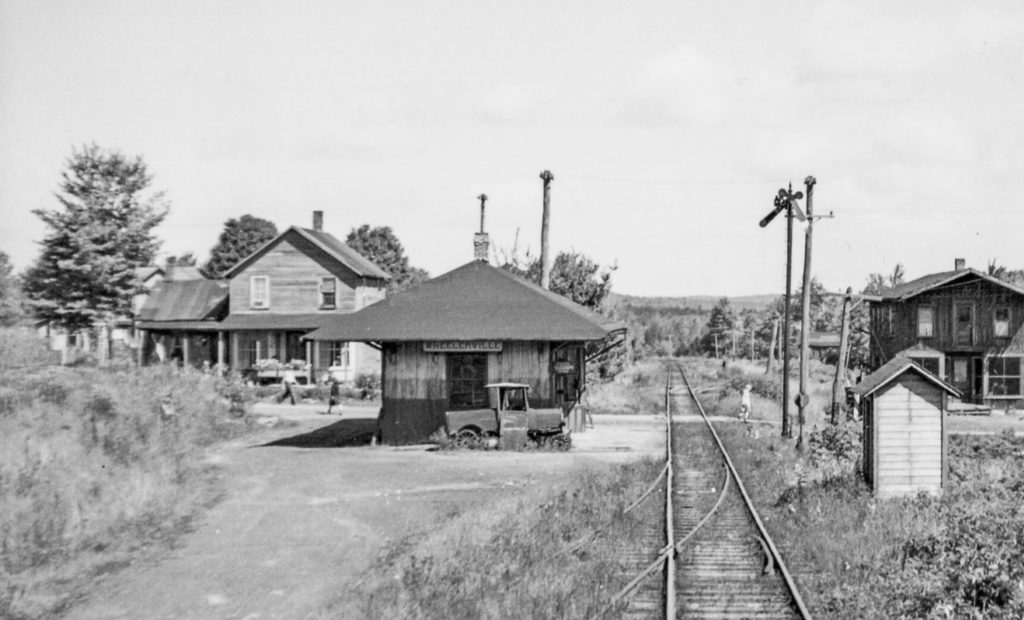
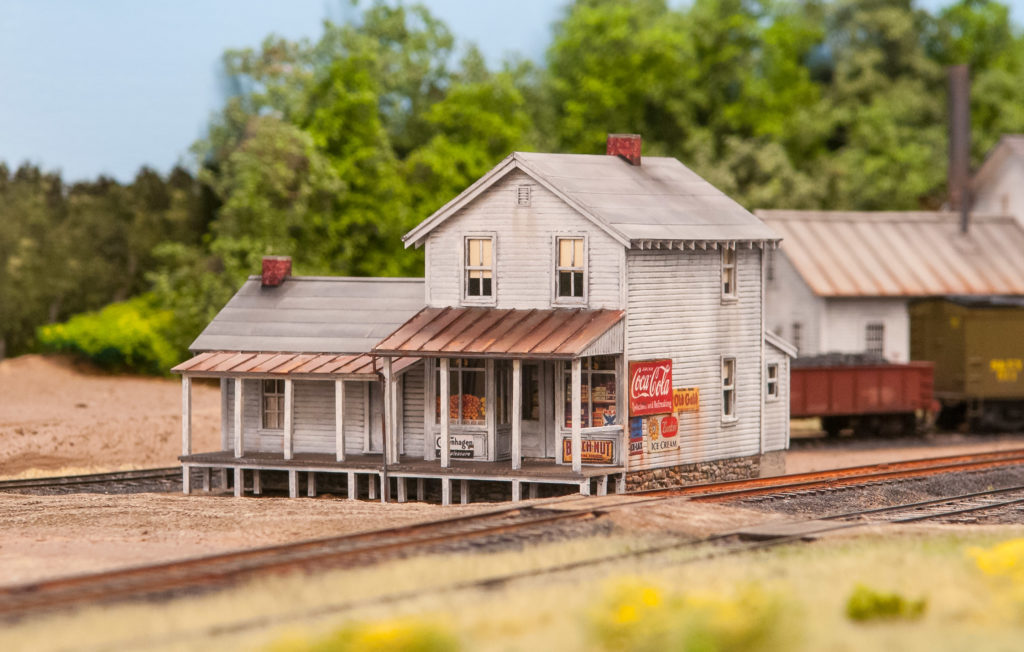
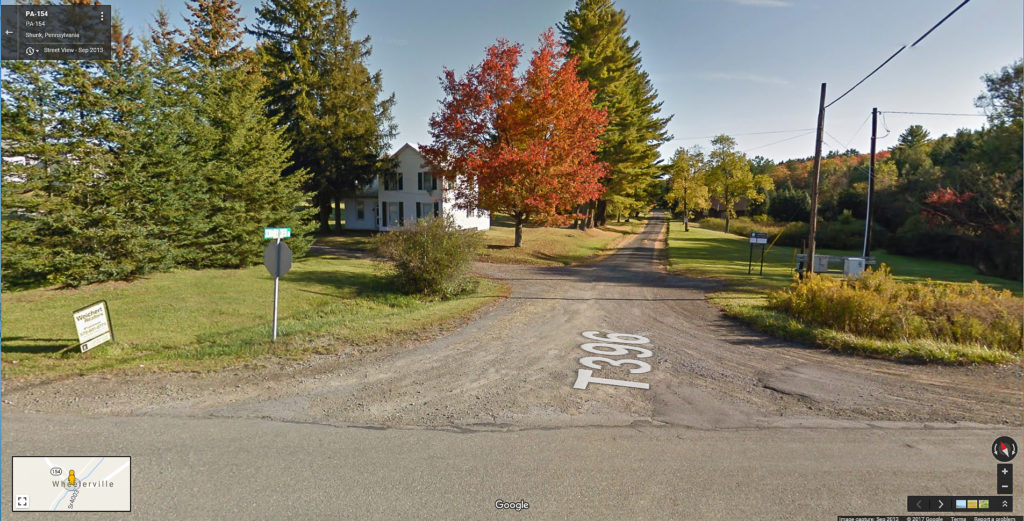







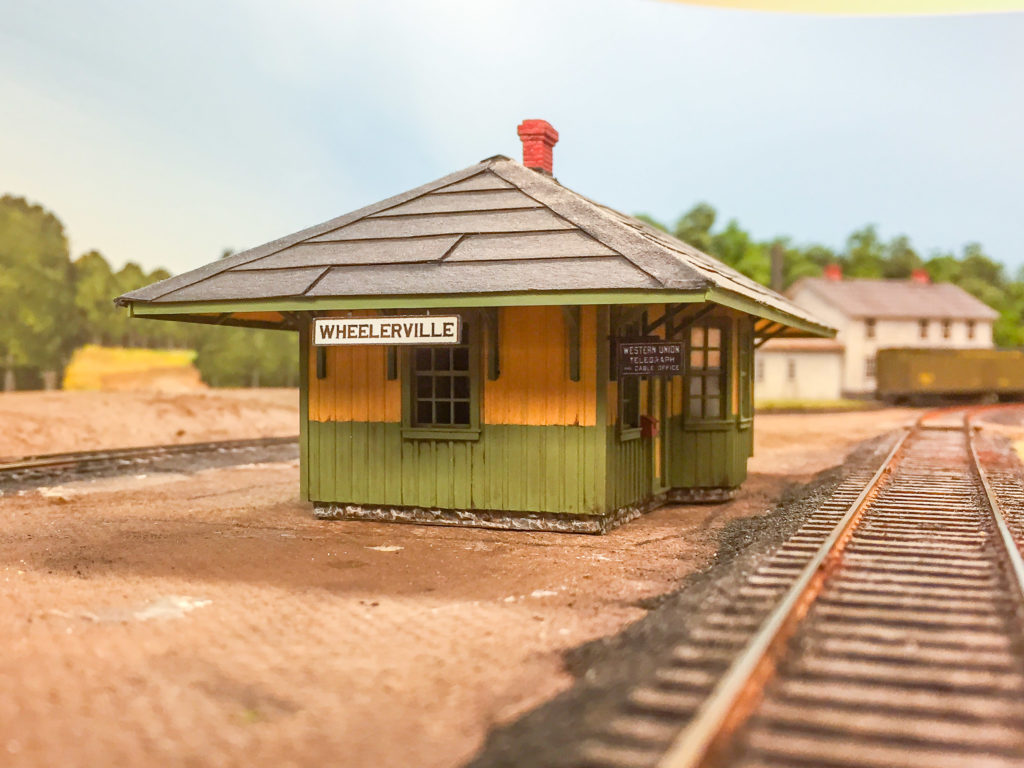
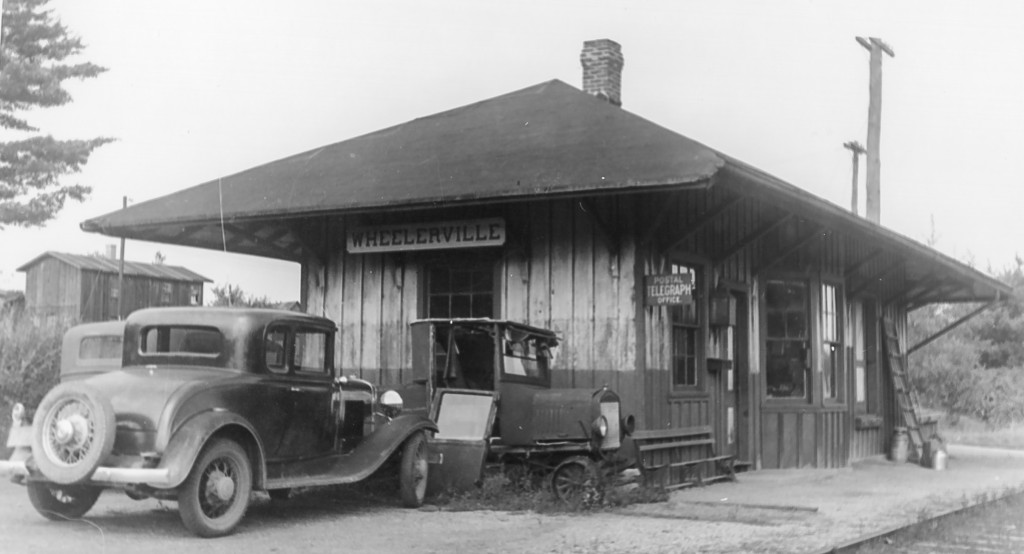
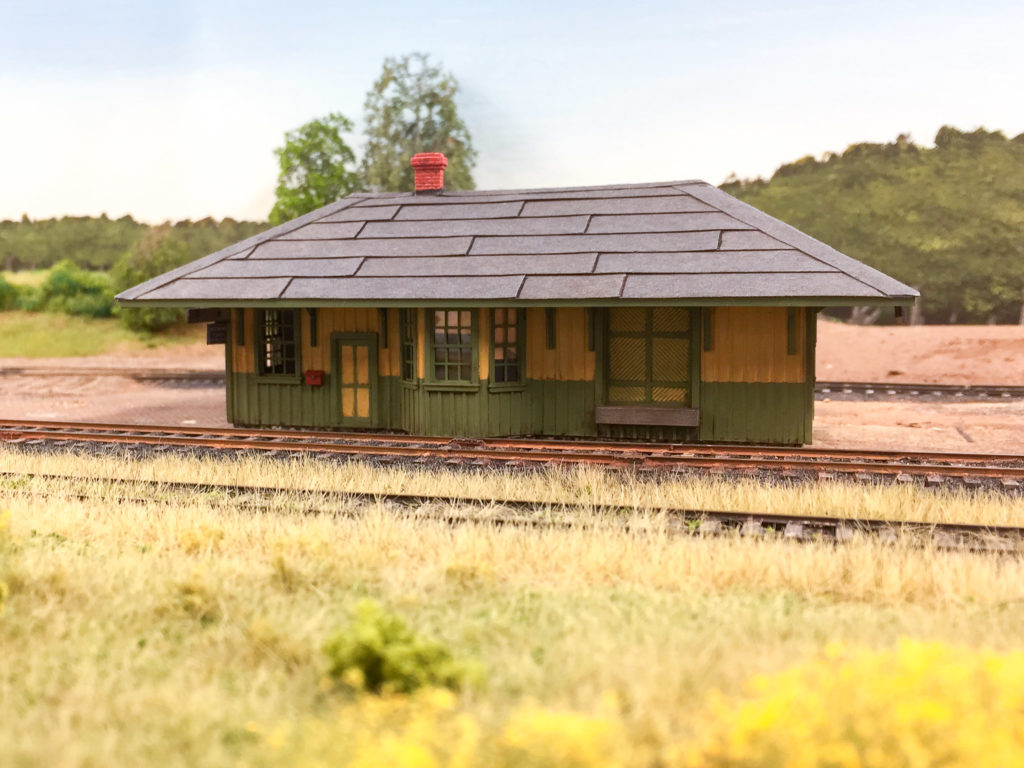
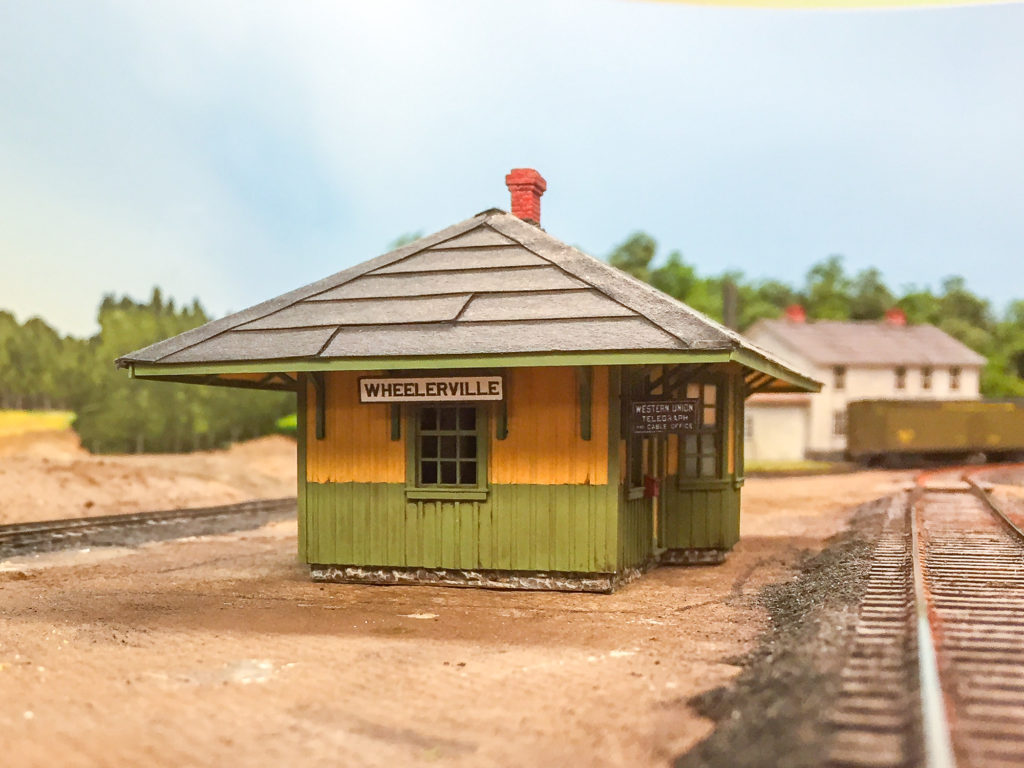
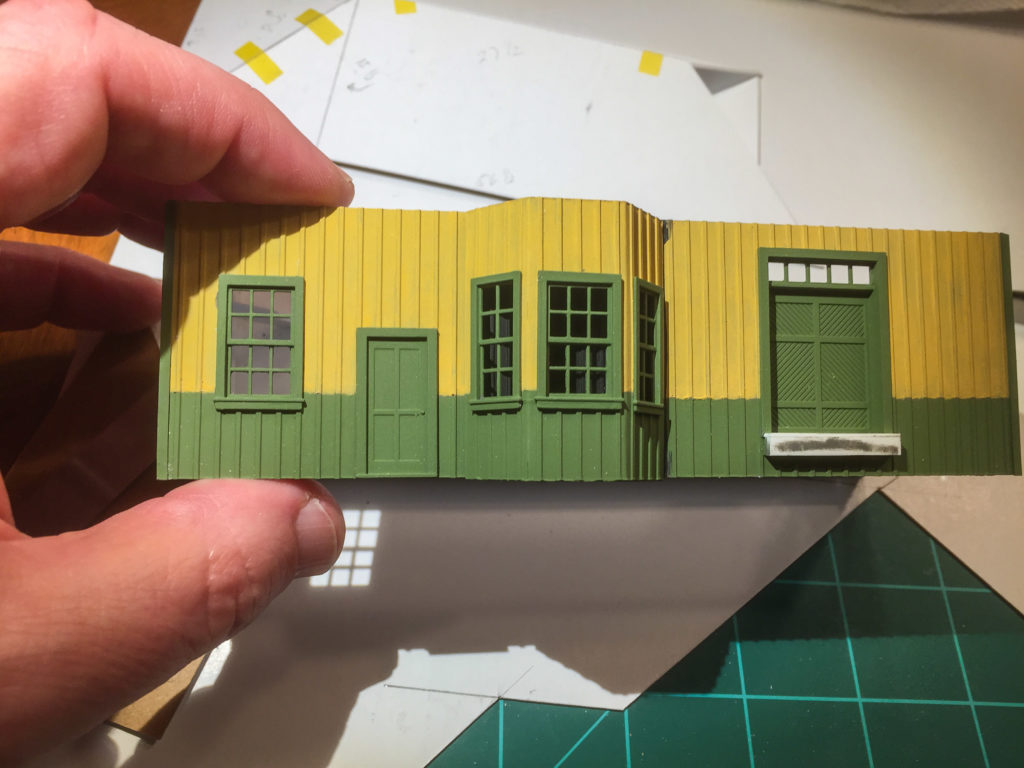
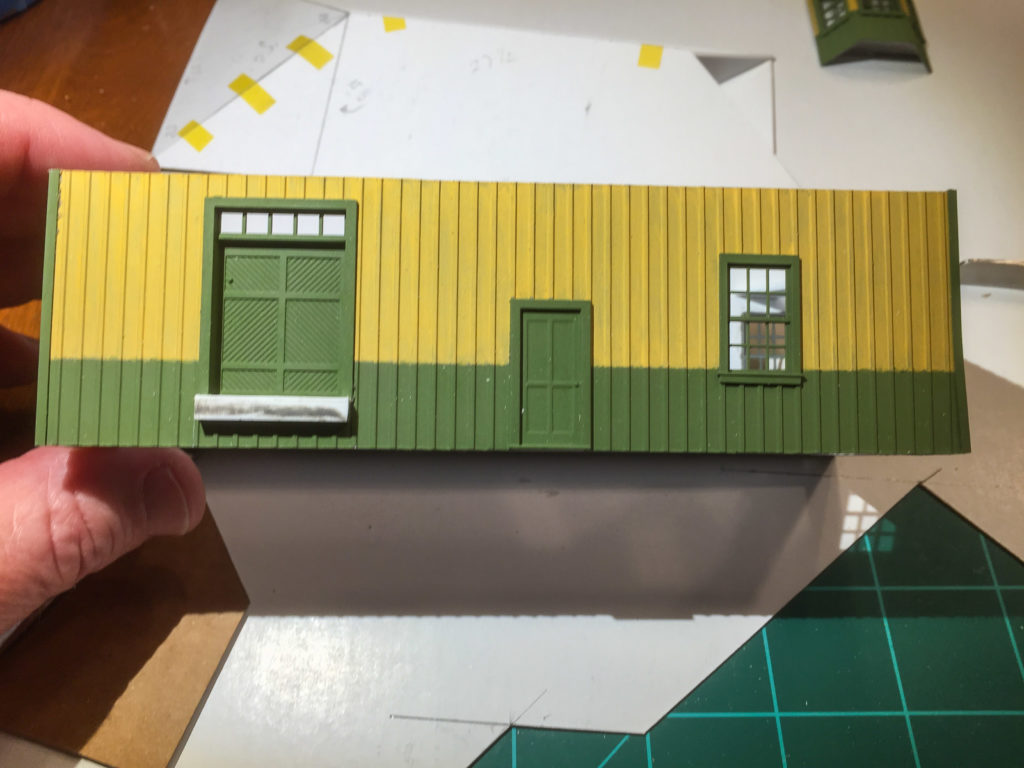
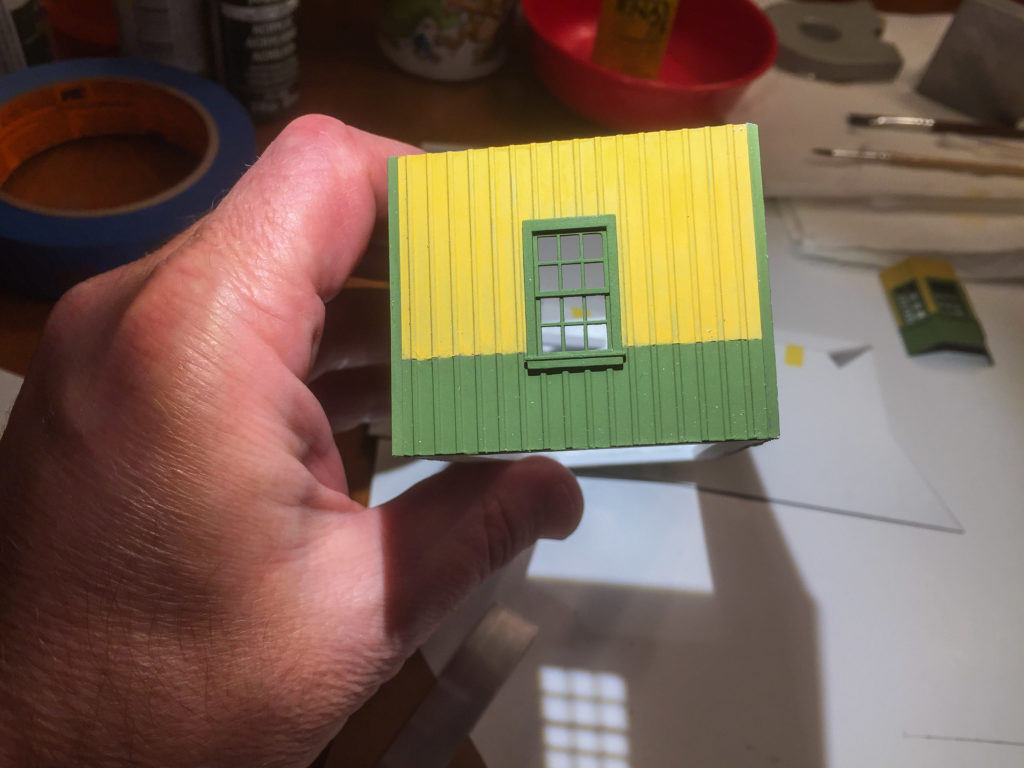

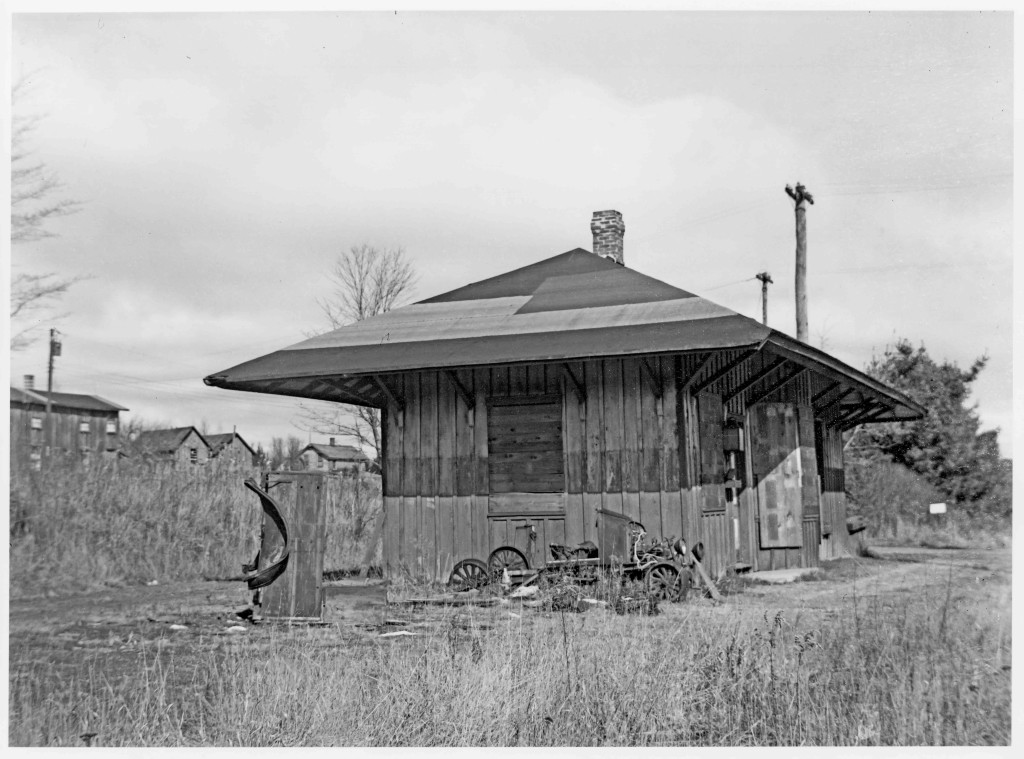
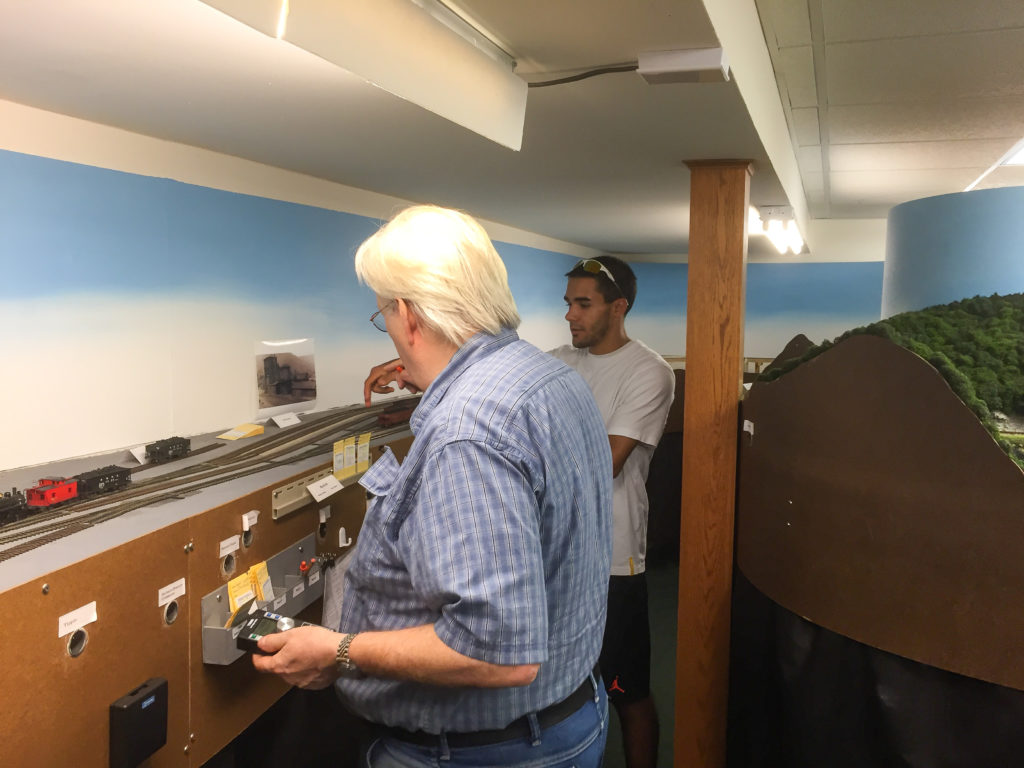

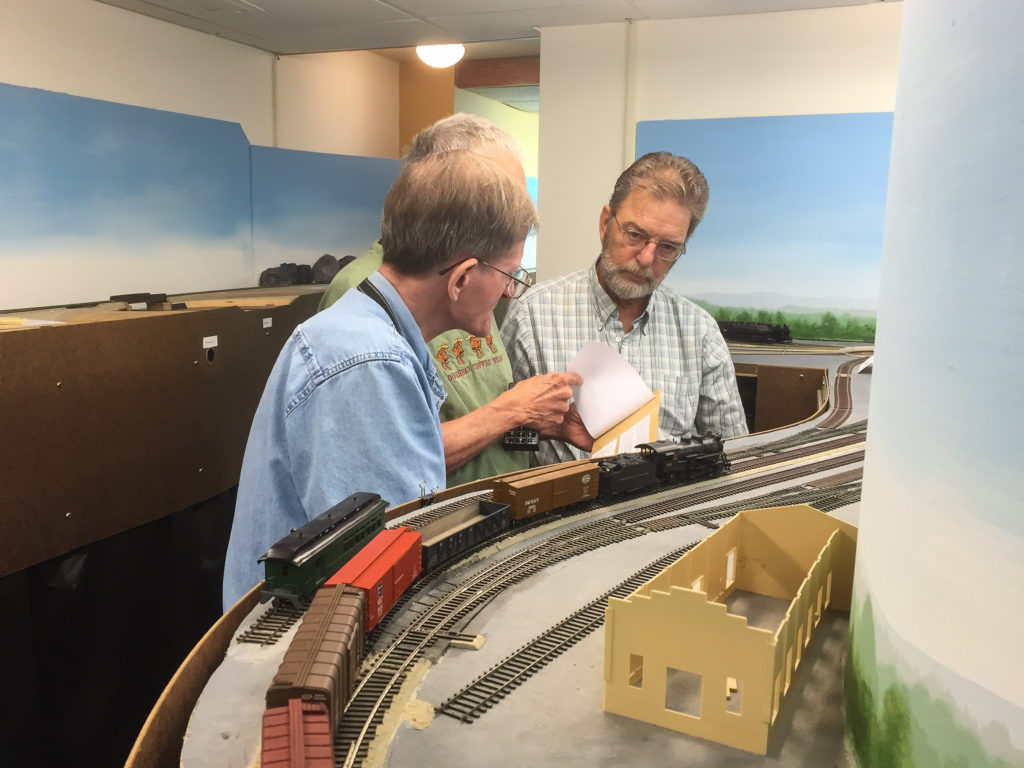

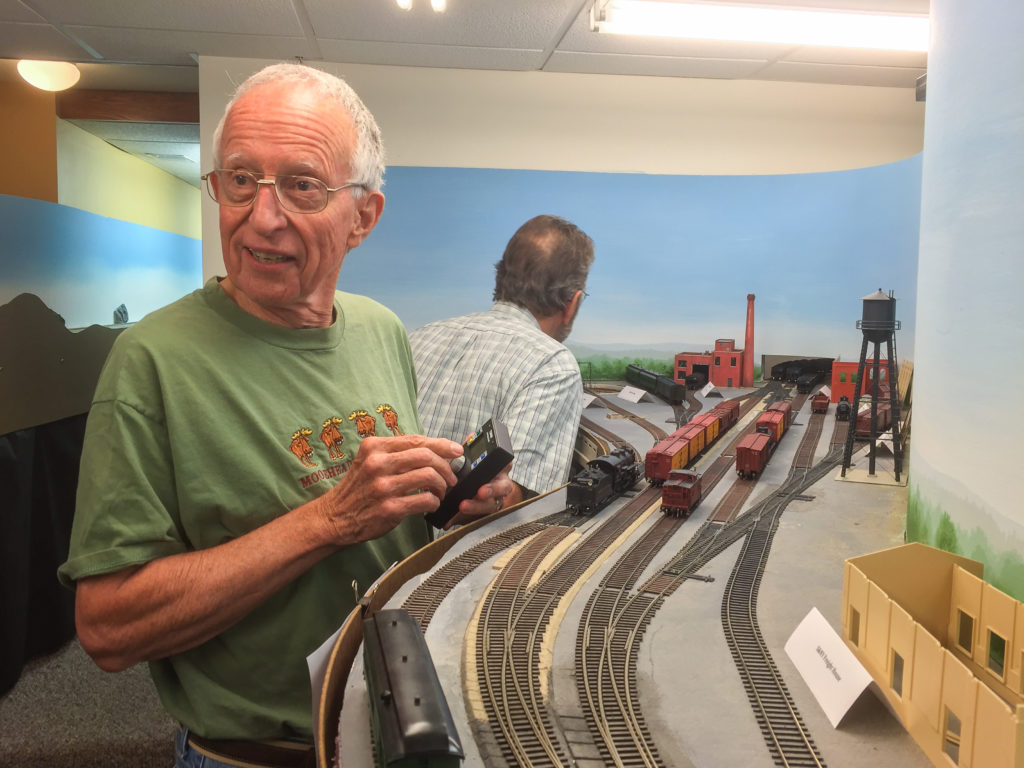
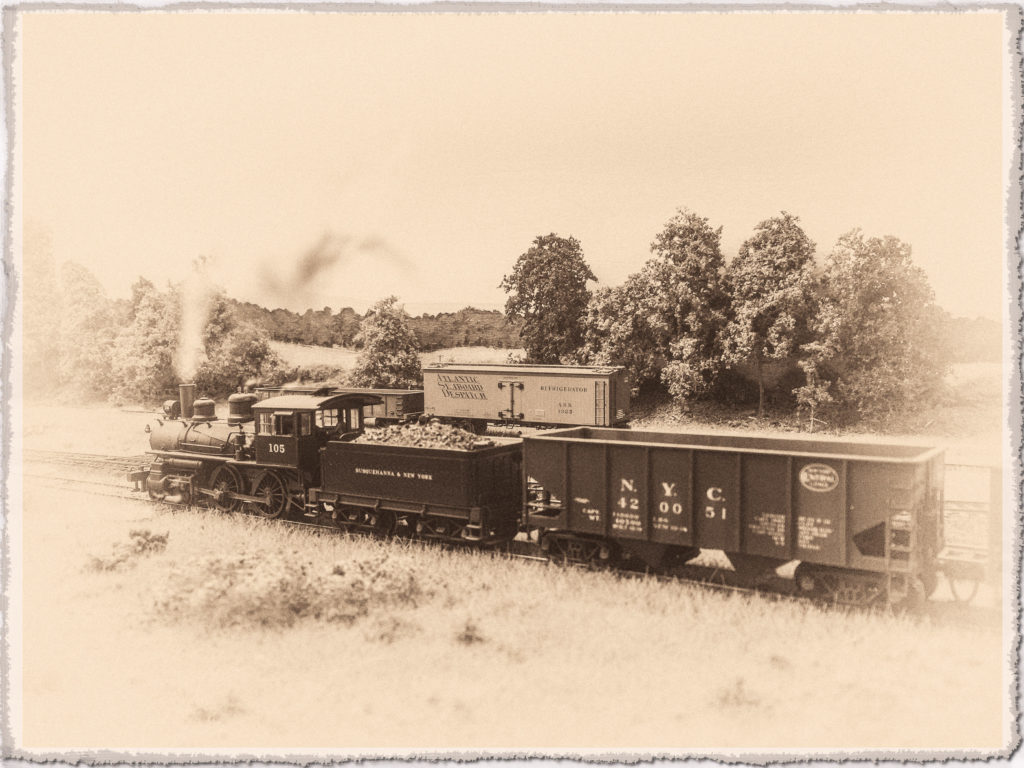
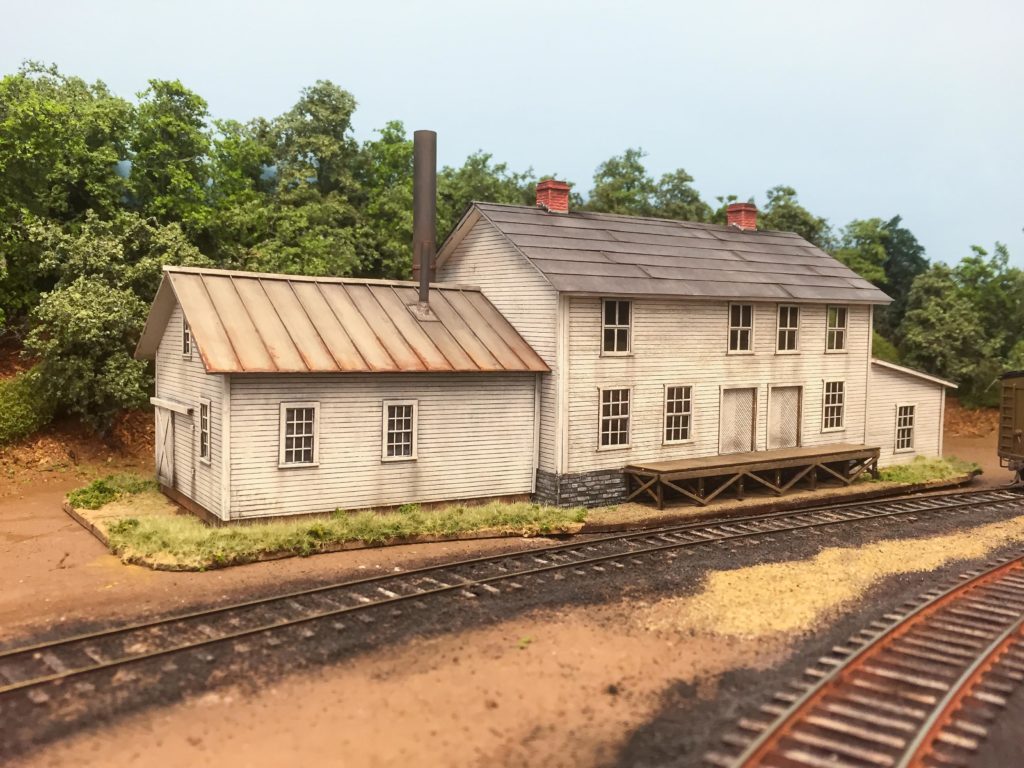
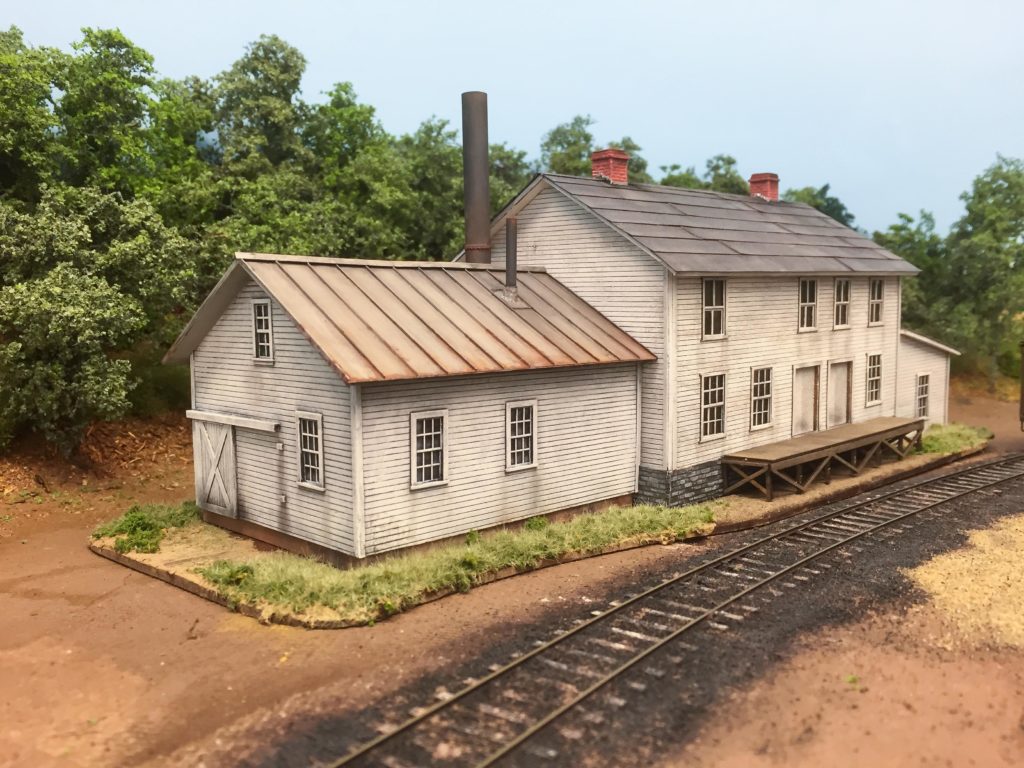
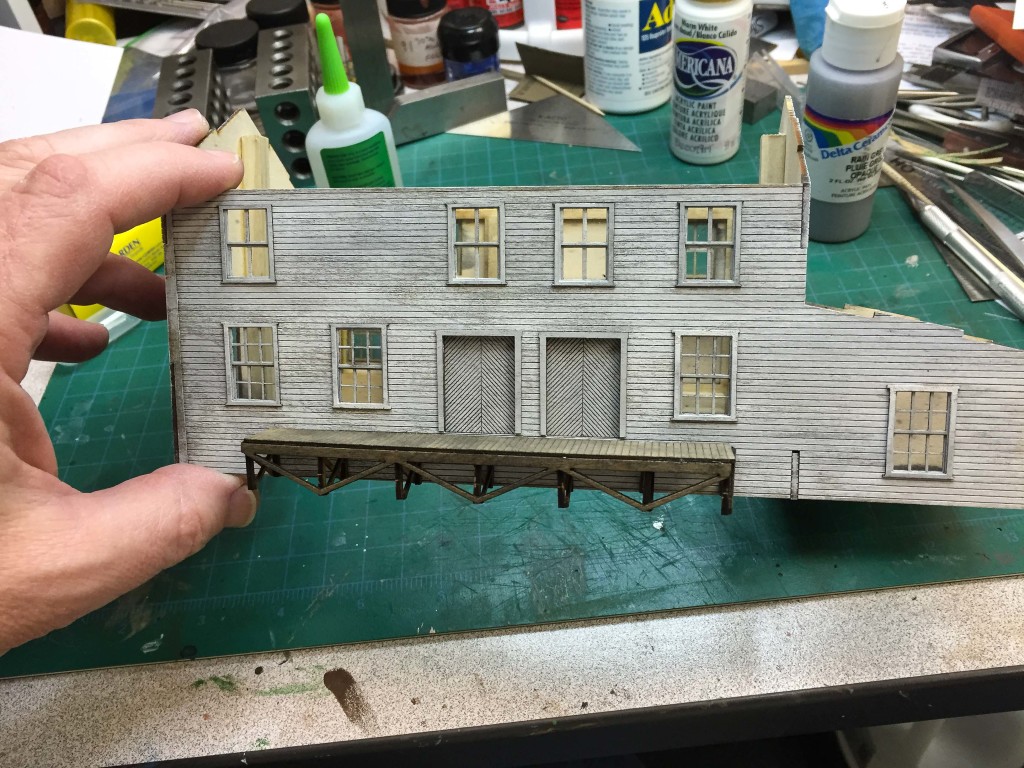
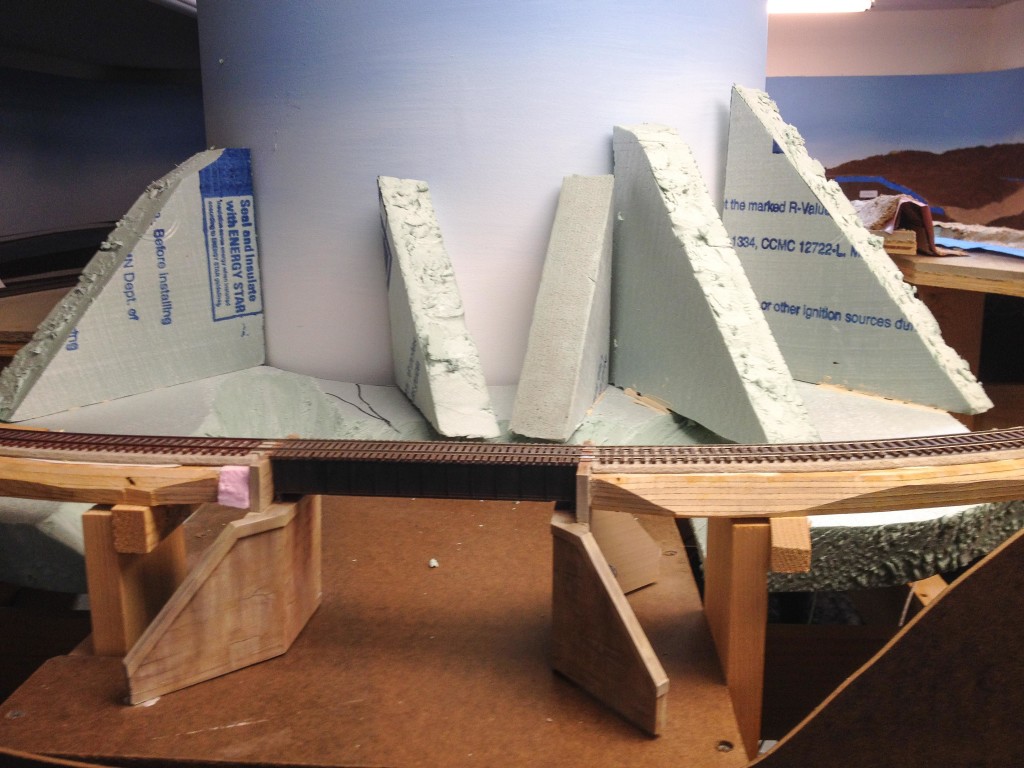
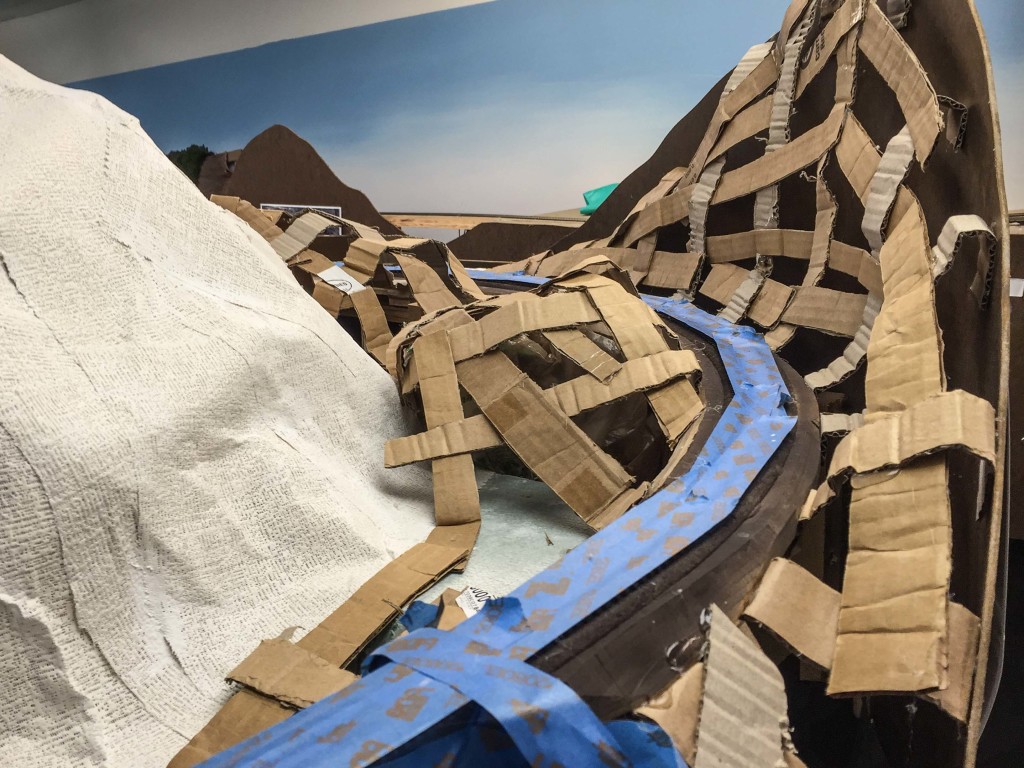
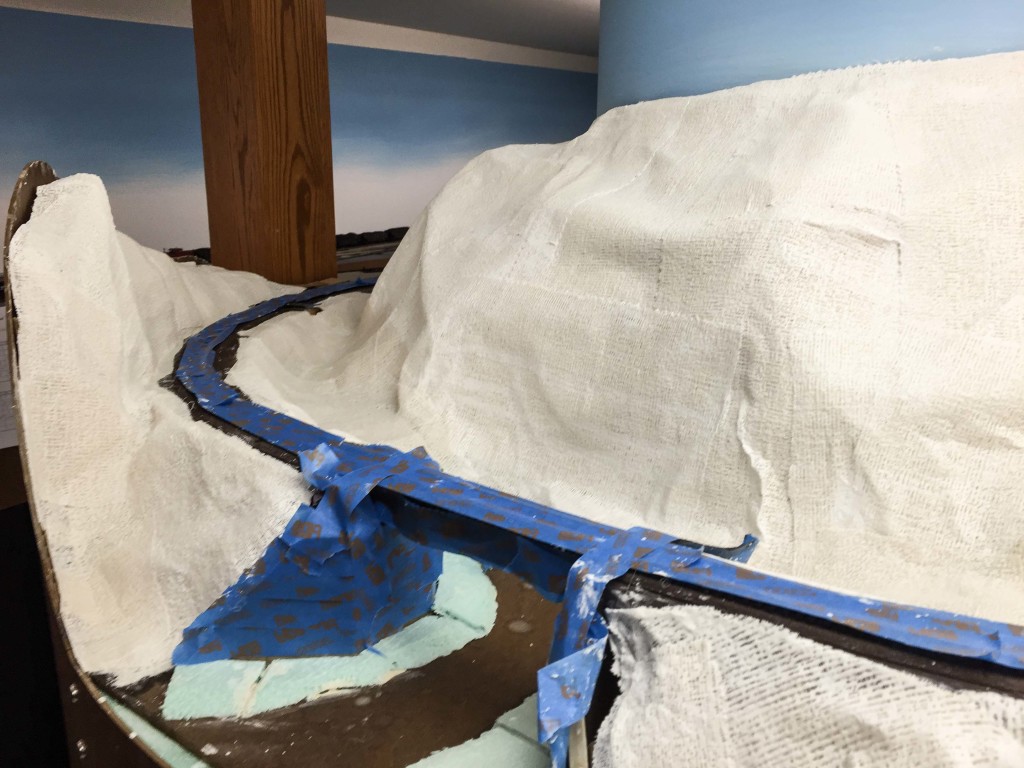
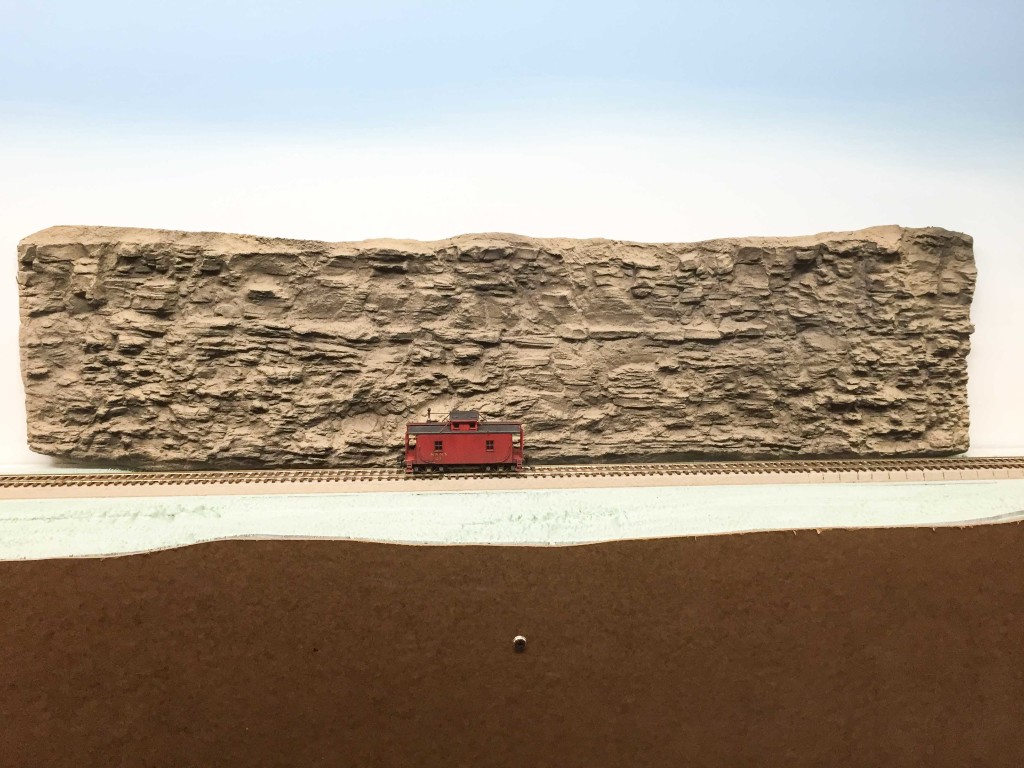
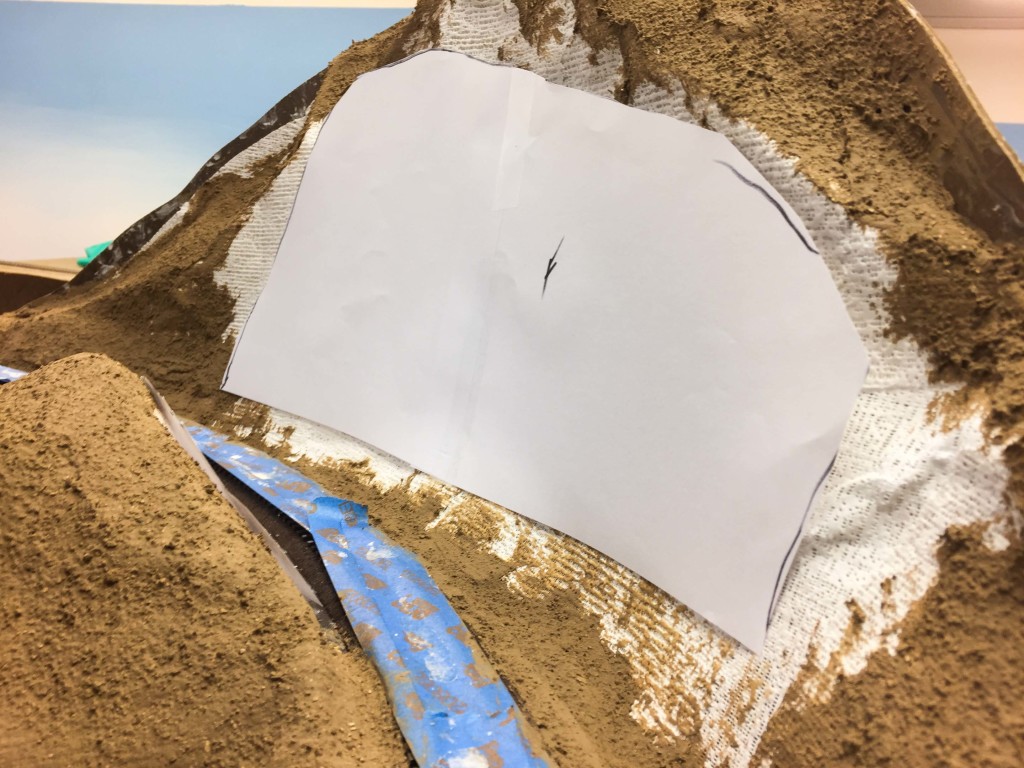
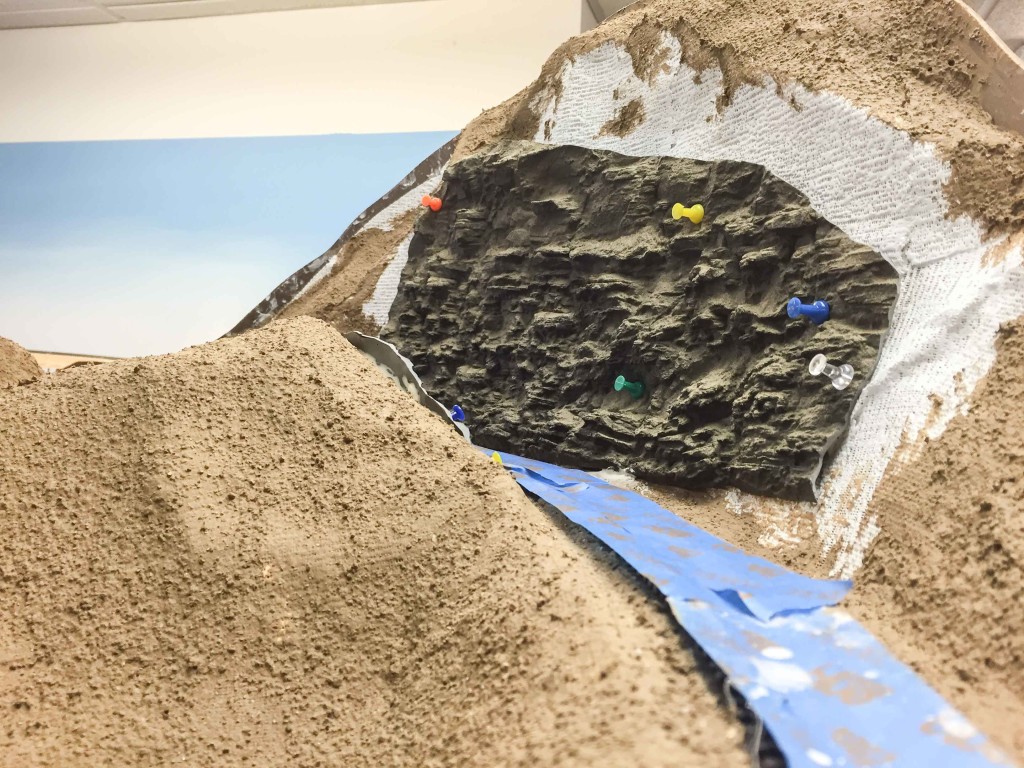
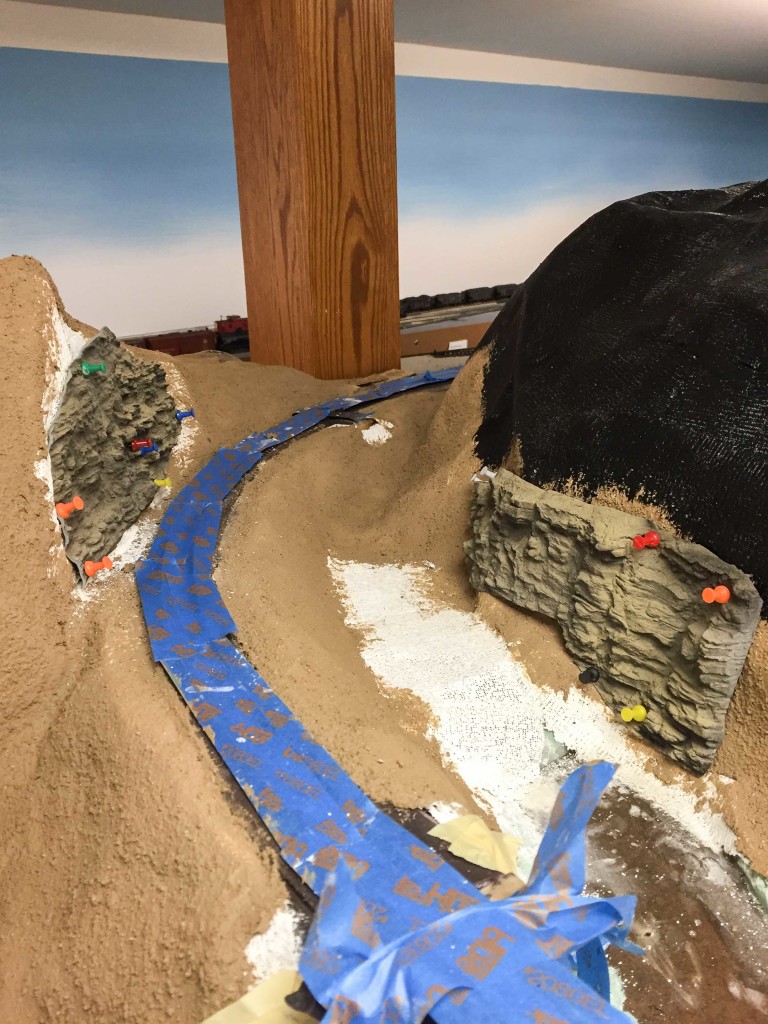
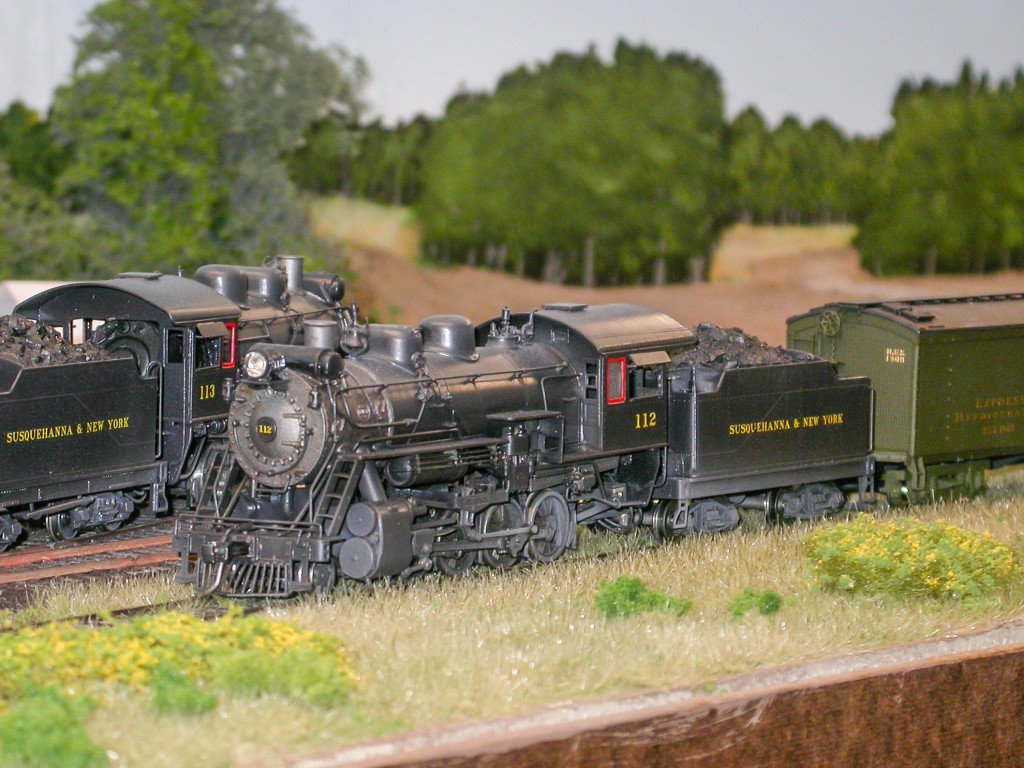
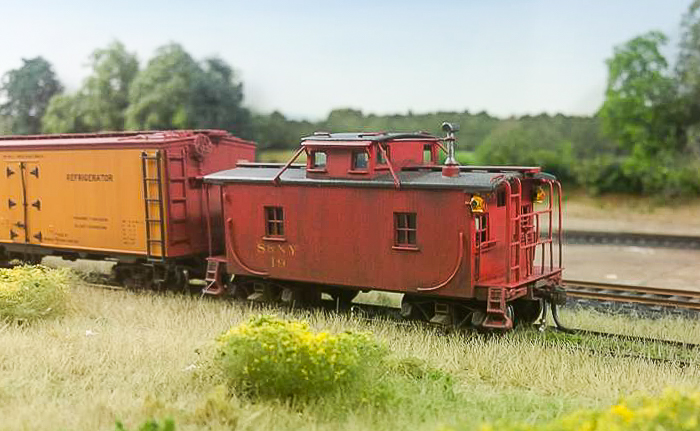
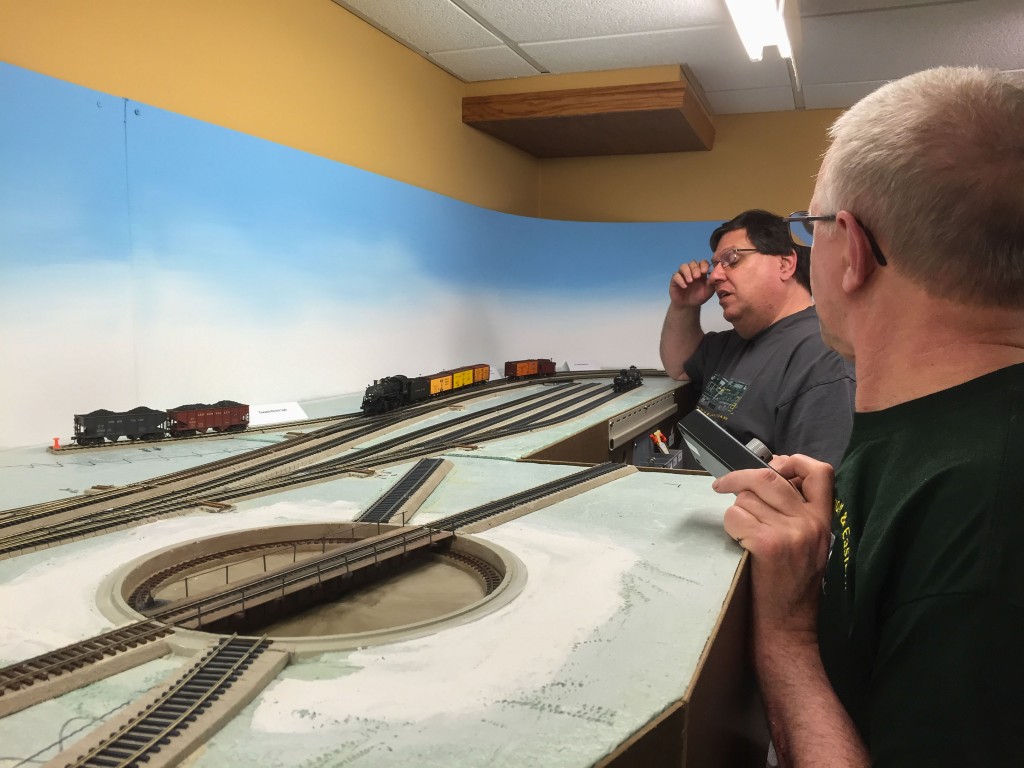
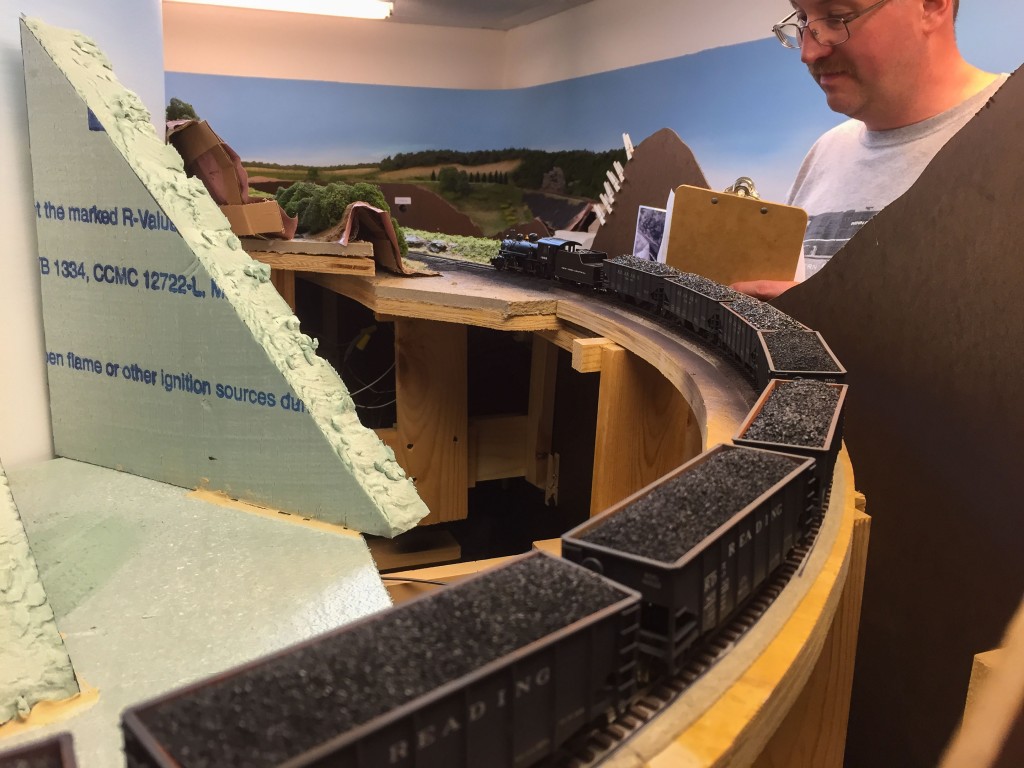
Recent Comments